Beauty of ballet: Story of a Singaporean dancer
SINGAPORE – This story begins, as they so often do, a long, long time ago, in a neighbourhood not too far away. Back then, I was an offbeat 15-year-old who was always yammering on about Hong Kong movies, music and celebrities. My classmate Elaine Heng, who sat behind me in class, was a slim, steady and soft-spoken girl who was famously obsessed with ballet. We clicked almost immediately, as one does at that age, when proximity trumps logic and reason. But when she fell asleep with her legs stretched in a split in the tent we shared at Outward Bound Singapore, I knew there was something both remarkably different, and wonderfully odd about her.
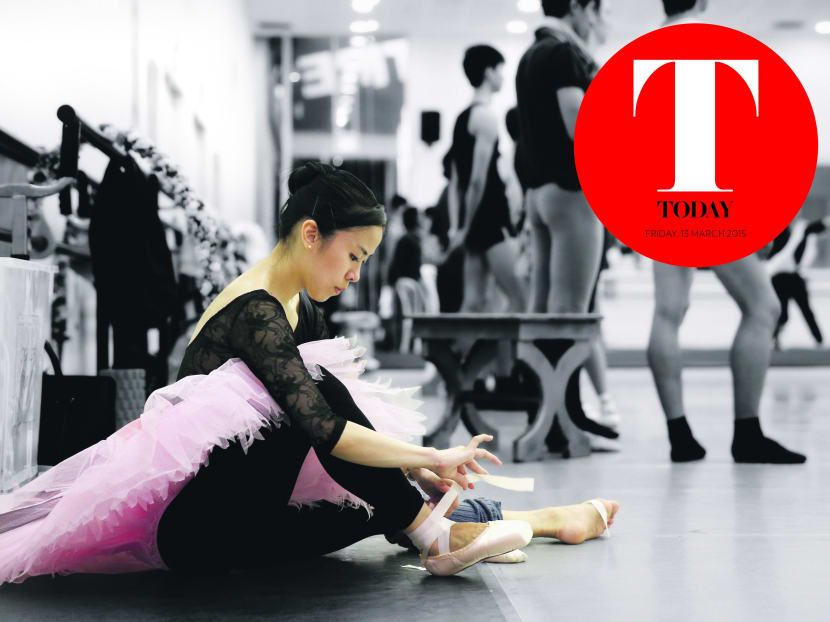
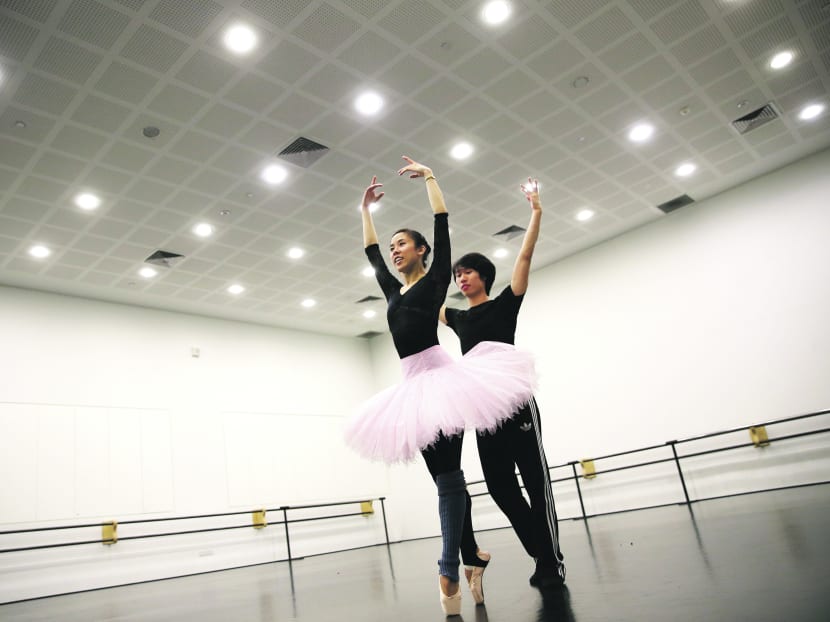
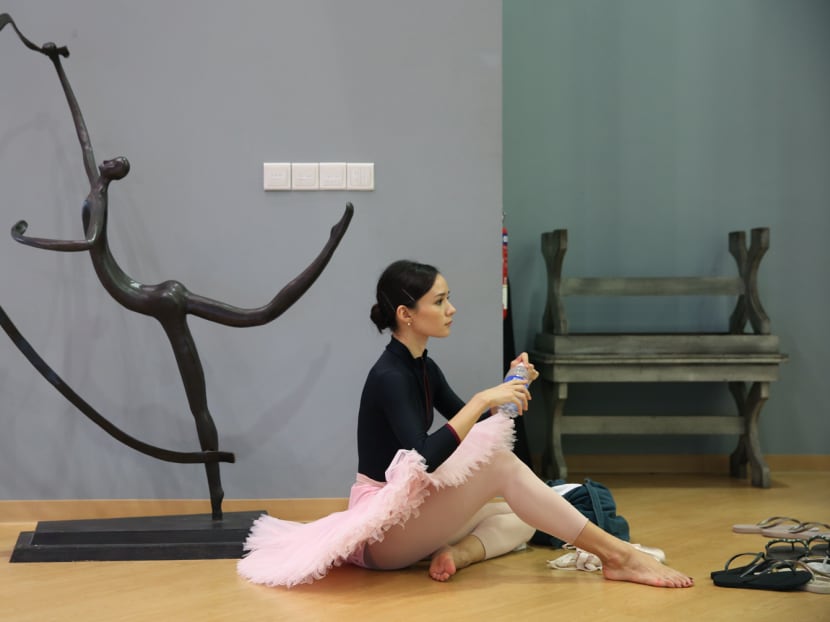
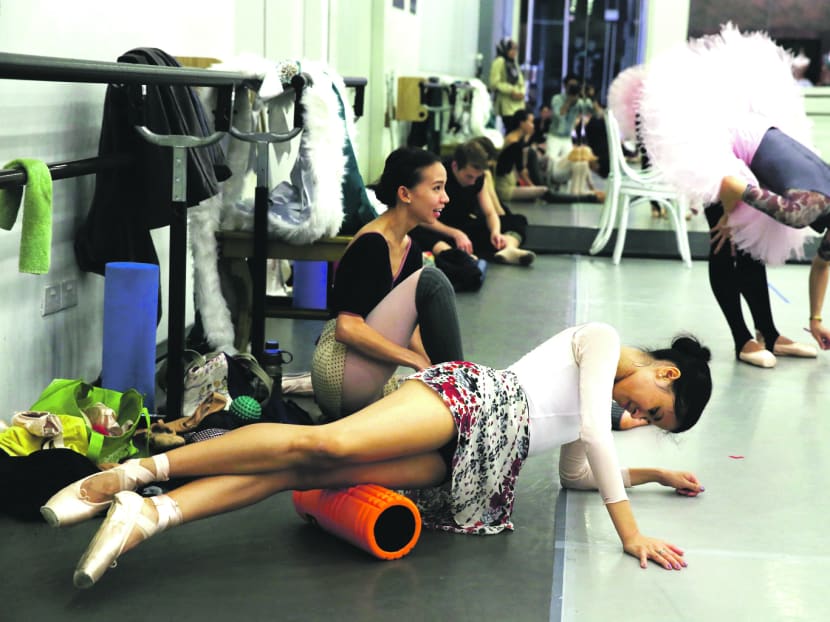
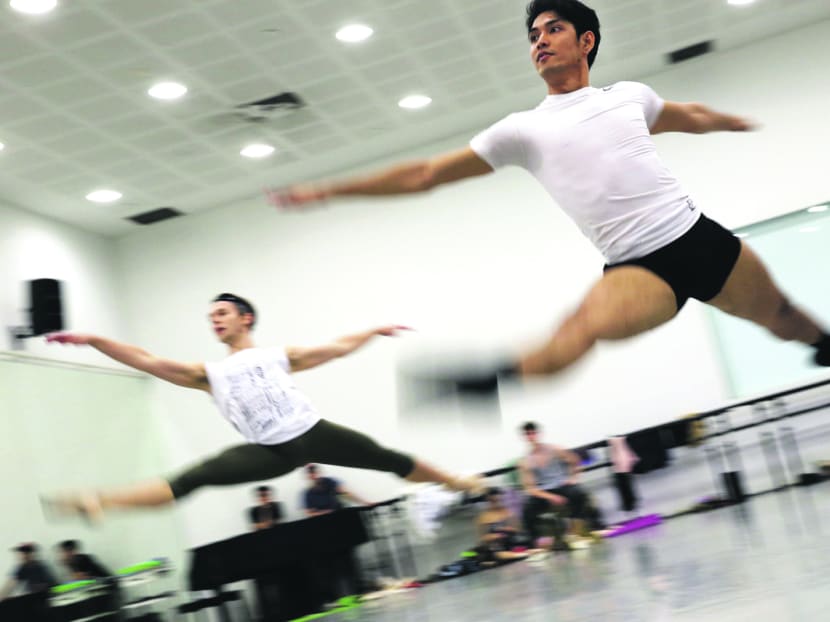
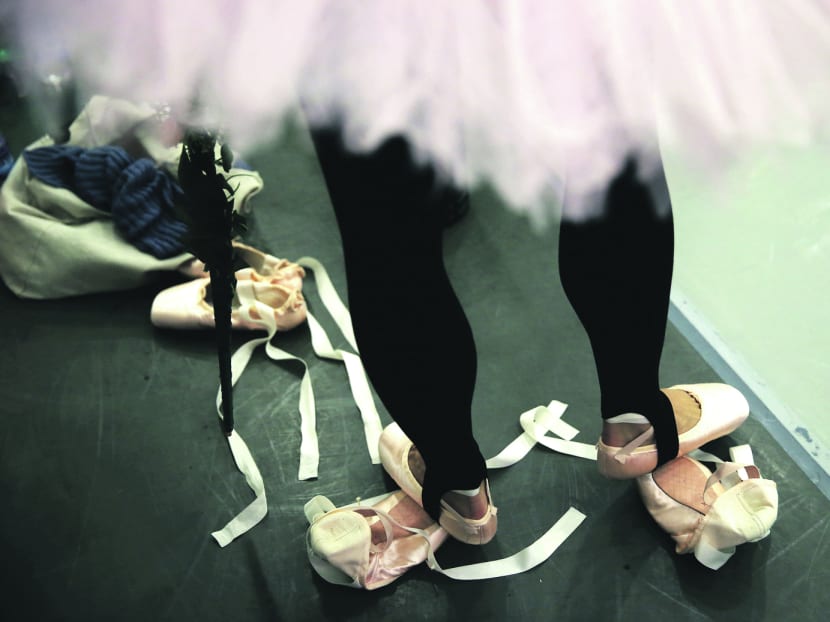
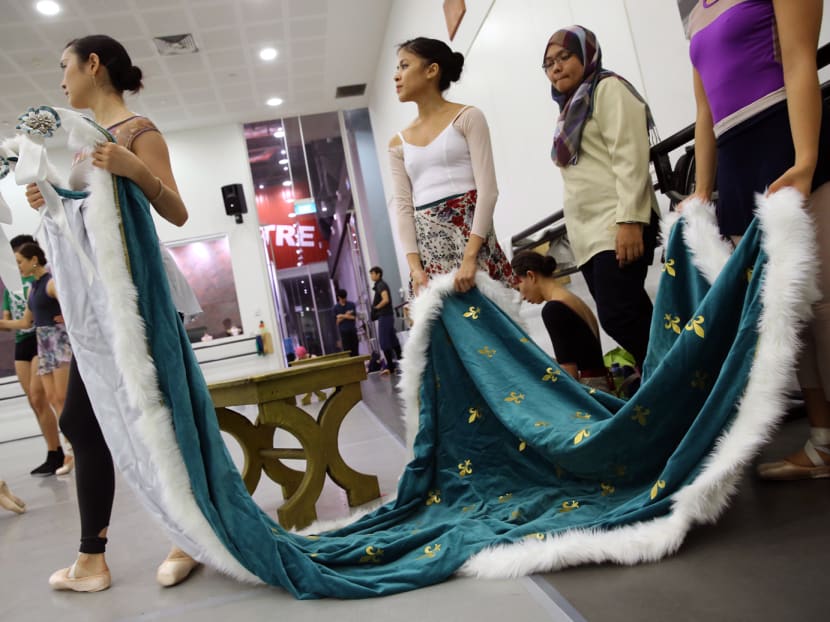
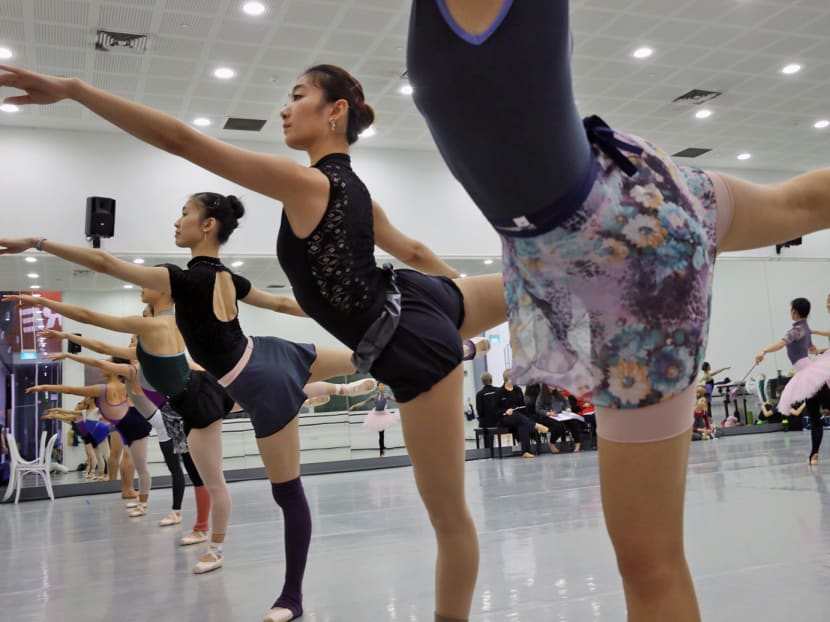
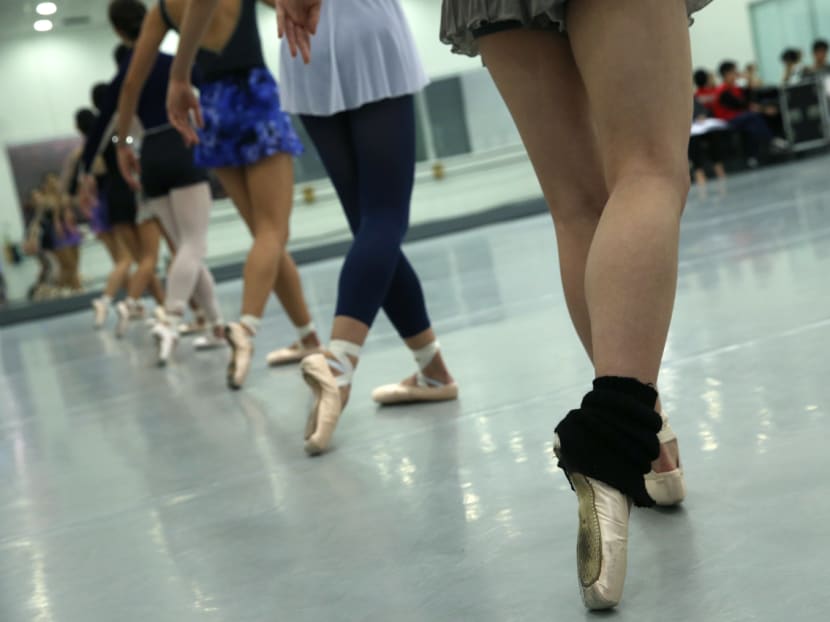
SINGAPORE – This story begins, as they so often do, a long, long time ago, in a neighbourhood not too far away. Back then, I was an offbeat 15-year-old who was always yammering on about Hong Kong movies, music and celebrities. My classmate Elaine Heng, who sat behind me in class, was a slim, steady and soft-spoken girl who was famously obsessed with ballet. We clicked almost immediately, as one does at that age, when proximity trumps logic and reason. But when she fell asleep with her legs stretched in a split in the tent we shared at Outward Bound Singapore, I knew there was something both remarkably different, and wonderfully odd about her.
More than a decade later, we are exactly where we want to be. Elaine is a professional dancer at the Singapore Dance Theatre (SDT) – one of only five Singaporean dancers in a company of about 40, and currently, as First Artist, one of the more senior in rank among them. And here I am, writing about her. Though we are hardly still the giggling girls we were in school, we still text each other daily, meet up for meals once a month, and indulge in a yearly sleepover or overseas trip.
Yet, what did I really know about my friend and her greatest love? I had watched her grow as a performer since her days as a young student at Singapore Ballet Academy; witnessed how, after junior college, she eventually convinced her parents to let her study ballet at the prestigious Central School of Ballet in London; seen her struggle with injuries on her ankle and shin; and watched more ballets than I really cared to, just to support her in her chosen career. I realised I had never taken the time to think about why she did what she did. What is ballet? Why are so many people determined to dedicate their lives to ballet, and why do so few eventually make it? Just what does it take to be a professional ballet dancer in Singapore?
I decided to find out for myself by joining Elaine in her rehearsals for SDT’s upcoming production, Sleeping Beauty. (No, not as a dancer, heaven forbid.) Here’s what went down:
JANUARY 23. I arrive at SDT’s studios on the seventh floor of Bugis+, and am introduced to the company’s artistic director Janek Schergen, who very generously invites me to observe the day’s rehearsals. The dancers are streaming back into the studio after their short lunch break. Looking at 40 people with tight, athletic bodies makes me feel guilty about my own soft tummy. Staring at the men in their very tight pants also makes me go slightly red in the face.
I was about to watch the company rehearse the Garland Waltz from Act 1 of Sleeping Beauty, in which Princess Aurora celebrates her 16th birthday. The dancers already know their steps, but some of the newer members in the company are evidently still unsure about what they are supposed to do. One of the dancers traps his female partner with a garland. Another makes a face when he very narrowly avoids colliding with his colleague. The circle they are supposed to make while dancing around each other looks more like a punctured balloon. “This is Aurora’s birthday party. You are the guests, not the peasants. Look elegant!” Janek sighs, before asking the dancers to rehearse the waltz again.
Princess Aurora finally makes her appearance, and all eyes are on her. The company always has two casts for every major production, and SDT’s only two female principal dancers, Chihiro Uchida and Rosa Park, play Princess Aurora. Today, it is Chihiro’s turn. She rehearses the famous Rose Adagio, where her four suitors take turns to hold her hand and promenade her around as she tries to balance en pointe in an attitude position (on one foot). It’s enormously difficult, made worse by the fact that it takes a remarkable amount of concentration, and is the first thing Aurora has to do when she comes on. Chihiro is a little shaky, but she manages it – and even somehow looks beautiful doing it. Once it ends, however, she runs off to the side of the studio, leans against the wall and pants violently. That’s certainly something you don’t see at the Esplanade.
After rehearsals end, I have a thousand questions to ask Elaine about my first experience watching a ballet rehearsal up-close.
“Were any of those four suitors the prince?” I ask.
“No. The prince – played by male principal dancers Chen Peng and Kenya Nakamura – comes out later in Act 2,” Elaine replies.
“Why does Chihiro have to change her tutu every time she practices a new dance?”
“She needs to change her practice skirts from classical tutus to long ones depending on the repertoire she is dancing, so her partner can estimate how close he can get, and what difficulties will arise when he lifts her.”
“Do male dancers wear anything under their tights? Don’t they feel awkward knowing that everyone can see the shape of their bottoms?”
“They wear dance belts beneath their leotards. It’s something like a jockstrap.” I notice she has ignored the second part of my question.
Elaine also tells me about the role she will play in Sleeping Beauty – the Lilac Fairy. The Lilac Fairy is the most powerful fairy in Sleeping Beauty and is responsible for saving Aurora from the villainous Carabosse (or Maleficent in the Disney version). She brings the prince and princess together. This will be Elaine’s first major role since she was promoted to First Artist (one rank below principal) earlier this year, and she is worried about performing her variation solo in the prologue – a challenging minute-and-a-half sequence that involves a number of pirouettes.
“It’s just because I am not a turner,” she tells me. “I don’t always go up and find my centre. I can’t even trust myself with giving secure turns. I am more of a jumper.”
FEBRUARY 1. I sit waiting among hundreds of small children and their mothers at the Esplanade’s Dance Appreciation Series: Introduction To Sleeping Beauty. The point of the hour-long show, which presents excerpts of the ballet with some narration, is ostensibly to allow audiences to get acquainted with ballet and perhaps to tempt them into watching the full show when it opens in March. I am not sure how much the children actually absorb, because one young French girl spent most of the show pointing at random dancers saying, “That’s the queen!”
I receive a text from Elaine before the show. “I’m so nervous. This Lilac variation is so unpredictable.”
“You’ll be awesome, I’m sure of it,” I reply.
And of course she pulls it off, brilliantly.
FEBRUARY 5. Back in the studios: I am fortunate because I get to watch the leads of both casts practise their fish dives today. The fish dive, simply put, is a partnering step where a male dancer catches and dips his partner. It’s a beautiful, majestic grand pas de deux celebrating Aurora and the prince’s wedding at the end of the ballet. It looks like it could be effortless, but during rehearsals, you see how much strength, technique and precision it really involves. Up close, you see every tremor and every drop of sweat. And you can hear Rosa going “Oh!” and sticking out her tongue when she and Chen Peng, who plays the prince, over-estimate her force going into the turn, which results in her almost falling on her face mid-dip.
Meanwhile, in a separate studio, Janek is telling individual dancers where they should be standing and how they should be reacting to the Carabosse’s appearance in the prologue, when she shows up and threatens to curse Aurora, only to be stopped by the Lilac Fairy. It occurs to me that the dancers are the most restless group of people I’ve seen. When left alone, most of them are always either rehearsing one of their parts, perfecting a pirouette, or stretching some highly specific muscle I never knew existed. The two Lilac Fairies, Elaine and Li Jie, rehearse their parts in the prologue repeatedly.
I think about how fascinating it is to watch different people play the same roles. Chihiro is a beautiful, delicate Aurora – you almost feel compelled to love her. Rosa is more powerful and commanding as the princess, which is all the more impressive when you consider how she has twin seven-year-old daughters. Li Jie, who became First Artist in 2014, is majestic as the Lilac Fairy, while Elaine is softer, gentler and more elegant. As I watch them, I cannot help but wonder if the ballet dancer is a self-selecting breed. So, I ask Janek.
“There is a very famous quote by George Balanchine, the founder of New York City Ballet: ‘I want dancers in my company who don’t want to dance, but have to dance’,” he says. “That is the difference – people who have no way of satisfying their soul unless they are dancing. If someone wants to make money, find a job that is going to get you (the money), because this isn’t going to do it.”
Yet, there is no lack of young dancers who would give almost anything for a career in dance. According to Janek, SDT gets about 400 requests for auditions every year, even though they have few spots for new additions.
“Ballet can be very unforgiving, (but) a good body doesn’t mean that you are going to be a good dancer. When you look at good schools and the little girls with perfect bodies – they almost all attrition out by the top, because they are not ready for the first person to criticise them.
“It’s the second layer, the ones who have had to struggle through some difficulty – maybe their feet aren’t as arched, or they aren’t as technically strong – but they want it, they desperately want it, and they will push and they will get their way through. They are the ones who become professional dancers.”
I ask Elaine if she thinks she might become principal one day.
“I don’t think I am a principal dancer, so I think I am quite realistic,” she admits. “I don’t wish for things I think I can’t achieve. To me, it’s about taking one step at a time. If it comes, then I will quickly rise to the challenge. But I don’t think I am good enough.”
FEBRUARY 12. I attend the rehearsal for Act 2, in which the prince goes hunting with his friends and is introduced, by the Lilac Fairy, to his future bride. It’s sometimes difficult having different sets of dancers practise at the same time, because there’s simply not enough room. Today, one of the dancers tells another off for eating into her space.
Dancers are apparently given an extra allowance, on top of their monthly salary – an average dancer’s pay is now more than S$2,000 – for each act that they appear in. So it makes financial sense for the dancers in bigger roles to dance in smaller ones on alternate nights. Elaine and Li Jie, for example, dance in the corps on the nights they don’t play the Lilac Fairy.
I ask Elaine if she ever feels bothered by her below-average wage, in a city where finding a simple meal can often cost more than S$10 – though she knows how lucky she is to have the support of her family, including her mother who still drives her to work.
“I think the older you get, the more you think about these things. I can’t say it doesn’t bother me, because you do worry about whether you would be able to support not just yourself, but a family if you eventually have one,” she tells me. “But it’s a liveable wage, and there are people in Singapore who are earning a lot less. You alter your lifestyle – you cannot be too lavish with things, and you probably won’t own your own apartment until much later. Or you can get rich from your next career.”
FEBRUARY 25. Elaine sends me a text in the morning. “I sprained my big toe,” she says. “Landed wrongly from a lift. So annoyed. It’s bruised on top right now.” I arrive at the studio in the afternoon - to find Elaine rehearsing. Doesn’t your foot hurt, I ask. “I’ve popped five painkillers,” she tells me, brightly. I will never understand dancers.
FEBRUARY 26. I receive a late night text from Elaine. “Just did my variations really badly. I have done way more bad variations than good. It’s worrying me,” she writes. “I’m just bad at pirouettes. I can never get them right consistently. Today was just bad. It’s embarrassing.”
I don’t know what to say to her.
FEBRUARY 27. I arrive at the studio late on Friday, to find Elaine in a studio, practising her pirouettes on her own. Dancers at SDT start work at 10am, beginning with company class, where they warm up and sharpen their techniques. Rehearsals then go on until 5.30pm, with an hour’s break in between.
I ask Elaine if she knew what was wrong with her pirouettes. “I wouldn’t be upset if I knew the problem,” she says, frustrated.
I sit down with some of Elaine’s colleagues, to find out more about what they love most about their jobs.
“It’s different at every stage,” says Chen Peng, who hails from China and has been in the company for a decade. “When I was younger, I loved the technical aspects of dancing, like the turns and jumps. I loved practising them every day. But after I turned about 24 or 25, I started falling in love with the stories. The partner dances started to interest me more.”
“I love my job, I love going on stage, and I love the rehearsal process,” says Etienne Ferrere, a French dancer who is a First Artist at SDT. “We’ll talk about it again in 10 years when the knees are painful – I already have an injured ankle, and we’ll see how the back and shoulders are. But I have been doing ballet for almost 20 years now, and there aren’t many things cooler than to do what you loved as a kid as a job.”
Though some admit that they now see the difficult realities of their choice of career, most tell me they’ve never thought about pursuing anything else.
“I was so sure, I didn’t even have time to doubt,” Elaine tells me. “I think when you are young, you are quite foolish that way. I think you’re not old or mature enough to see why your parents think (you should pursue a more stable career). You only decide that it’s what you want. But that kind of drive is also good, because it really pushes you to where you want to be.”
MARCH 4. This is the last rehearsal I will attend, before the show premieres on March 12 at The Esplanade. I feel like I am finally getting to know some of the other dancers a little better, just as they are getting used to seeing me with my pen, notebook and un-dancer-like gait, skulking silently around the studios. And I now actually know what I am watching, thanks to Elaine who has been patiently answering my questions.
I stand outside the studio, watching Elaine as she prepares to practise her variations – the first time she is doing them after her poor run last week, and one of the last times she will before the actual show. She dances around the studio, light as a feather, executing her pirouettes one by one, her face twisted in concentration. Then, the music ends. She is brilliant! The company, including Janek, who leaps from his seat in delight, applauds.
I sit outside SDT’s studios at the end of the day, waiting for Elaine to wash up and meet me for dinner, and thinking about everything I have seen, heard and learned in the last few weeks. While I used to think of ballet as a spectacle, I now see that it is more than expression, more than mere sport or even art. Ballet isn’t just a test of one’s physical limits and mental strength. It isn’t even about actually achieving perfection – but, rather, the pursuit of perfection. And there is beauty in being a part of that process, whether one is dancing, watching, or simply writing about it. I think about what Chihiro told me earlier in a separate conversation.
“It’s definitely worth it. There is no limit to ballet,” she said, when I asked if she thought ballet was worth all the blood, sweat, tears and ugly toenails. “There is no perfection. That makes it more interesting because no matter how hard you work, you only know that you can do better, step by step.”
Elaine soon emerges from the changing room, fresh and ready to go. I look up and say to her: “E, I think I’m starting to understand the beauty of ballet.”
“Oh Hon!” she says enthusiastically, before wrapping me in a hug. “Finally!”
Sleeping Beauty will run from now until Sunday, March 15 at The Esplanade Theatre. Tickets from S$30 to S$70 from SISTIC.





